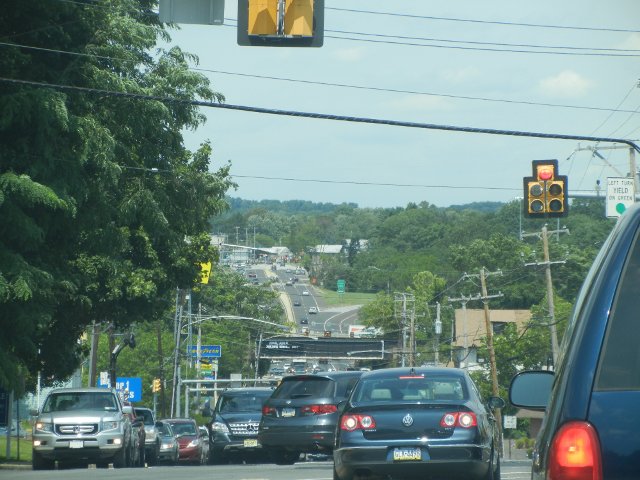Traffic and Urban Sprawl on PA-611 Near PA Turnpike (I-276) in album cars

Aug 6th, 2011, by Alex Zorach
This photo shows a congested area of suburban sprawl in Philadelphia's north suburbs. This photo was taken on PA-611, looking north towards the underpass under the Pennsylvania turnpike. The turnpike is not visible due to the CSX Freight Train travelling across the freight rail bridge that is just before the turnpike. This picture was taken on a Saturday in the middle of the day, and the traffic was pretty dense and unpleasant.
Pennsylvania as a state is not known for its suburban sprawl the way a number of other states such as New Jersey or California are, but it has a problem with sprawl too. The areas north and west of Philadelphia are some of the worst.
Philadelphia's suburbs are older and more sustainable than most suburbs, as many of them cluster around train stations, and have walkable commercial areas. Many of these suburbs offer a unique combination of suburban living in an environment that does not require frequent automobile use. Yet in between these older suburbs and at the fringes of them, a number of unpleasant sprawl areas have arisen. On this road, I am travelling away from Willow Grove, PA, one of these old suburbs with an urban center and a train station near the downtown, and towards Horsham, PA, a newer suburban community that has no train station, no town center, and is completely unwalkable.
Although many of these old suburbs have good commuter rail service to and from downtown Philadelphia (even during off hours and on weekends), the lack of "lateral" transit options requires a car use for local travel between these suburbs. As I was visiting a friend in Horsham on this day, and then travelling over to Huntingdon valley, I needed to use a car for my travels, thus contributing to the congestion and general unpleasantness in this area.
How could this situation be improved? The most immediate way to make this area more sustainable would be to start using transit as much as possible in this area. The more people ride local buses and use regional rail for local trips in these suburbs, the more often the buses and trains will run, which will make it easier to live in this region without a car...creating a snowball effect sending this region farther in the direction of sustainability. In the long-run, zoning that encourages denser and walkable development, especially transit-oriented development, could also help greatly. However, most of these communities already have transit-oriented design, the issue is more the level and frequency of service.